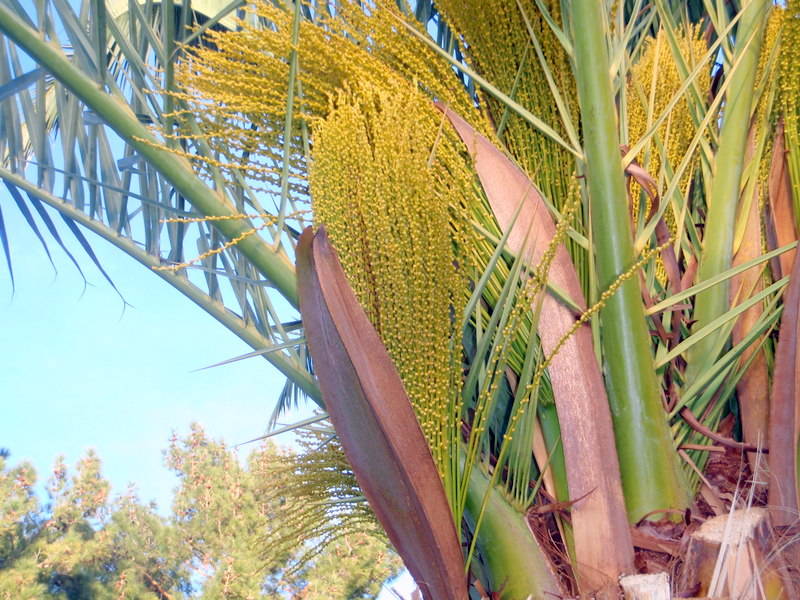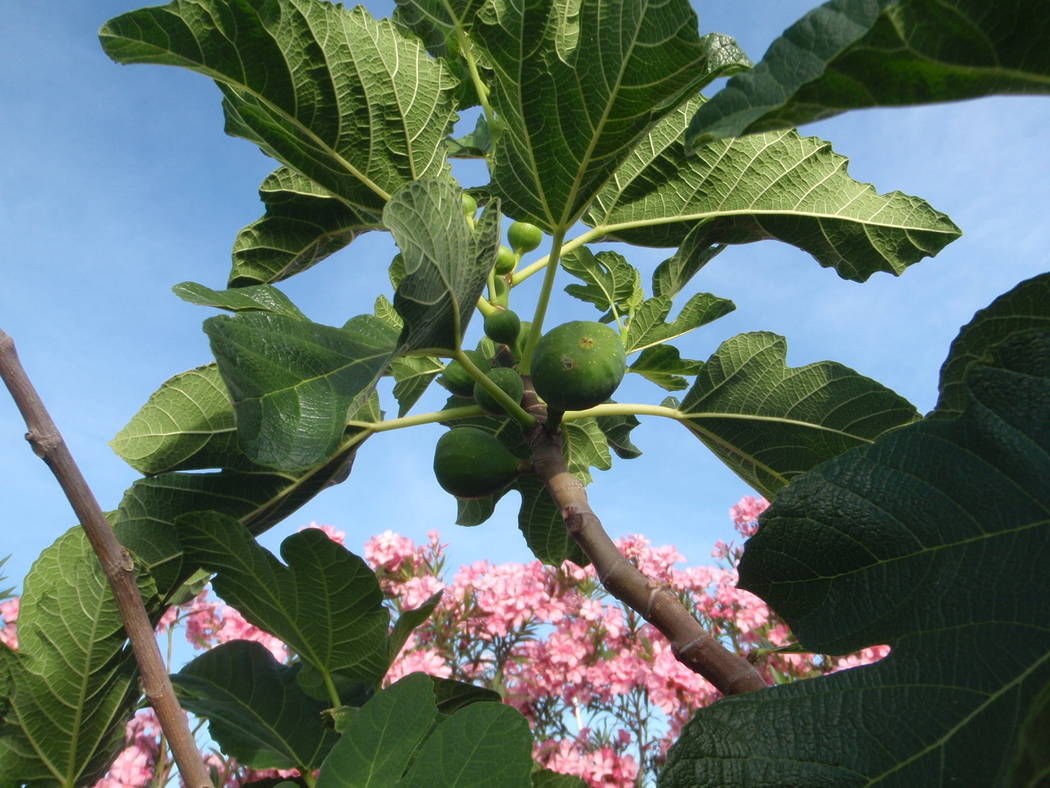Palms can be male, female or produce both types of flowers
Q: We have several Mexican fan palms plus a few identified as hybrid California and Mexican fan palms in our backyard. They are sending out flower stalks and make a huge mess for anybody who has a pool. One of my neighbors said that only female palm trees produce these messy stalks. True?
A: There are hundreds of different kinds of palm trees, and palms are variable whether they are male, female or produce both types of flowers on the same tree. For instance, both the Mexican and California fan palms have male and female flowers on the same tree. But the date palms, both the true date and the Canary Island date palm are either all male trees or all female trees but they never have male and female flowers on the same tree.
So if you have the California or Mexican fan palms then all of them are “messy.” But date palms are different. Male date palms are less messy around pools than female date palms. Look for fruit on older female date palms if you aren’t sure whether they are male or female (they must be about 6 feet tall before females start producing fruit).
It is nearly impossible to “sex” a tree before it starts producing flowers or fruit if grown from seed. Palms propagated from suckers will be the same sex as the parent tree. California and Mexican fan palms are started from seed. Date palms may be started from seed or suckers.
Q: I tried to start fig trees with cuttings taken from my big, sturdy tree and putting them in water or soil. Not much luck. How can I start new fig trees?
A: Figs are easy to start from cuttings provided you take them at the right time of year, the cuttings are the correct age and they are placed in soil or medium that drains water and is free from disease. They can also be started by air layering or rooting suckers at the base of the tree trunk. Placing cuttings in jars of water or using garden soil can lead to drainage and disease problems.
Cuttings taken from new growth in the spring are 6 to 8 inches long and range in diameter from pencil size to as big as your thumb. With a sharp, sanitized pruning shears remove a length of new growth. Cut this new growth into pieces just below a node on the bottom and just above a node on the top. Include at least four nodes on each cutting and remove any leaves present on the cutting.
Push these cuttings into perlite or sanitized potting soil in a clean container that drains. Stick these cuttings upright, a couple of inches apart, so that two of the nodes are beneath the soil or media and two are above. Use a rooting powder for a larger number of roots that are more vigorous.
Place this container out of the direct sun but where there is plenty of indirect sunlight and keep it moist. Rooting occurs first followed by leaf development. Leaf development is a sign rooting has occurred.
Figs can also be started from the suckers at the base of the tree or by air layering. The base of the tree is mounded with soil around the suckers and kept moist. Damaging the sucker before mounding encourages root development. Traditional air layering methods can be used but keep them in the shade of the canopy so it is not damaged by direct sunlight.
Q: You said the main crop of figs is the second crop of figs. But on my Black Mission fig, the first crop has large fruit, and the second crop, although much more plentiful, has fruit that is about one-third the size. Both are delicious.
A: The size of the fruit has more to do with the total number of fruit growing on the tree. The fewer fruit on the tree, the larger each individual fruit becomes. The term “main crop” has more to do with where on the tree the fruit originates.
Fruit from figs comes first from stems that grew last year as well as a second crop on this year’s stems. Main crop figs are only produced on stems that grew this year. The early or first figs, called the “breba crop,” come from stems that grew the previous year.
Some people claim that main crop figs taste better than the breba crop figs. I have never tasted any difference between the two. But generally smaller figs have more flavor than the larger figs and there is a difference in taste between different varieties of figs.
Q: I’ve been using adjustable drip emitters and replacing them every year because they plug from the hard water. They sputter air or just don’t emit water when they start a watering cycle. When I find one like that, I open up the watering rate until a steady flow is achieved, but it doesn’t seem to last.
A: Sounds like several possible problems going on with your drip system. Let’s start with the easy ones first. Make sure your drip irrigation system has a filter installed to prevent drip emitters from plugging and a pressure regulator to prevent high water pressure from damaging the emitters.
A removable flush cap must be on each of the irrigation lines so that the system can be flushed on a regular basis. This helps to prevent emitters from plugging. I will talk more about this in a minute.
The most popular filter for residential use is the inexpensive screen filter. It is oftentimes a black canister installed close to the irrigation valve used for drip irrigation. It is normally installed immediately downstream of the valve in the same irrigation box.
The screen inside the filter should be removed regularly and gently cleaned or replaced if damaged. Clean the filter two or three times a year when using city water, more often if you’re using well water. The dirtier the water, the more often the filter needs to be cleaned.
Pressure regulators prevent the water pressure from rising above the limits allowed for the drip emitter to operate normally. They don’t increase water pressure if it is too low. Match the pressure regulator to the pressure range recommended for the correct operation of the emitters.
It’s more complicated with a large drip irrigation system. In cases like these, use adjustable pressure regulators.
Flush caps or valves must terminate all drip irrigation lines that carry water. It is important to flush these lines by opening the irrigation line when the system is operating and let the water run until it comes out clean.
Open each flush cap sequentially for each drip irrigation line the same time the filter is cleaned. Flush the line if repairs are done on the system that allows dirt to enter that might plug emitters. The No. 1 reason for failure of a drip system is not flushing drip irrigation lines and cleaning the filters regularly and after repairs.
Air release valves are an add-on to the drip system if trapped air is a problem or takes a long time for the drip emitters to start dripping water. Air release valves are inexpensive and exhaust trapped air in the system quickly before the irrigation lines become fully pressurized with water. They are usually installed at the end of a drip irrigation line or in combination with a flush cap or flush valve.
Adjustable drip emitters are not pressure compensated. This means they deliver water at variable amounts depending on the water pressure and their elevation relative to other emitters. One reason I don’t like adjustable emitters is because of their lack of precision; when one adjustable emitter is opened to allow a greater flow of water, less water flows from the other emitters on the same line.
Bob Morris is a horticulture expert and professor emeritus of the University of Nevada, Las Vegas. Visit his blog at xtremehorticulture.blogspot.com. Send questions to Extremehort@aol.com.
























